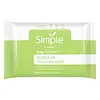What's inside
What's inside
 Key Ingredients
Key Ingredients

 Benefits
Benefits

 Concerns
Concerns

 Ingredients Side-by-side
Ingredients Side-by-side

Alcohol Denat.
AntimicrobialHydrofluorocarbon 152a
Water
Skin ConditioningPolyurethane-14
Octylacrylamide/Acrylates/Butylaminoethyl Methacrylate Copolymer
Panthenol
Skin ConditioningOlea Europaea Leaf Extract
PerfumingVitis Vinifera Seed Extract
AntimicrobialCamellia Sinensis Leaf Extract
AntimicrobialPogostemon Cablin Leaf Oil
MaskingGlycerin
HumectantLactamide Mea
HumectantPPG-12 Dimethicone
Skin ConditioningAmp-Acrylates Copolymer
Triethyl Citrate
MaskingAminomethyl Propanol
BufferingPhenoxyethanol
PreservativeChlorphenesin
AntimicrobialSorbic Acid
PreservativeBenzoic Acid
MaskingParfum
MaskingBenzyl Benzoate
AntimicrobialAlcohol Denat., Hydrofluorocarbon 152a, Water, Polyurethane-14, Octylacrylamide/Acrylates/Butylaminoethyl Methacrylate Copolymer, Panthenol, Olea Europaea Leaf Extract, Vitis Vinifera Seed Extract, Camellia Sinensis Leaf Extract, Pogostemon Cablin Leaf Oil, Glycerin, Lactamide Mea, PPG-12 Dimethicone, Amp-Acrylates Copolymer, Triethyl Citrate, Aminomethyl Propanol, Phenoxyethanol, Chlorphenesin, Sorbic Acid, Benzoic Acid, Parfum, Benzyl Benzoate
Ingredients Explained
These ingredients are found in both products.
Ingredients higher up in an ingredient list are typically present in a larger amount.
Benzoic Acid is used to preserve and adjust the pH of products.
The antimicrobial property of Benzoic Acid helps elongate a product's shelf life. Its main role is to reduce fungi growth and is not found to be effective at fighting bacteria. Therefore Benzoic Acid is always added along with other preservatives.
In its pure form, Benzoic Acid looks like a white crystalline solid. It has slight solubility in water.
The name of Benzoic Acid comes from gum benzoin, which used to be the sole source of deriving this ingredient. Benzoic Acid is the most simple aromatic carboxylic acid.
Benzoic Acid is naturally occuring in strawberries, mustard, cinnamon, and cloves. It has a slight scent but is not considered to be a fragrance.
Learn more about Benzoic AcidGlycerin is already naturally found in your skin. It helps moisturize and protect your skin.
A study from 2016 found glycerin to be more effective as a humectant than AHAs and hyaluronic acid.
As a humectant, it helps the skin stay hydrated by pulling moisture to your skin. The low molecular weight of glycerin allows it to pull moisture into the deeper layers of your skin.
Hydrated skin improves your skin barrier; Your skin barrier helps protect against irritants and bacteria.
Glycerin has also been found to have antimicrobial and antiviral properties. Due to these properties, glycerin is often used in wound and burn treatments.
In cosmetics, glycerin is usually derived from plants such as soybean or palm. However, it can also be sourced from animals, such as tallow or animal fat.
This ingredient is organic, colorless, odorless, and non-toxic.
Glycerin is the name for this ingredient in American English. British English uses Glycerol/Glycerine.
Learn more about GlycerinPanthenol is a common ingredient that helps hydrate and soothe the skin. It is found naturally in our skin and hair.
There are two forms of panthenol: D and L.
D-panthenol is also known as dexpanthenol. Most cosmetics use dexpanthenol or a mixture of D and L-panthenol.
Panthenol is famous due to its ability to go deeper into the skin's layers. Using this ingredient has numerous pros (and no cons):
Like hyaluronic acid, panthenol is a humectant. Humectants are able to bind and hold large amounts of water to keep skin hydrated.
This ingredient works well for wound healing. It works by increasing tissue in the wound and helps close open wounds.
Once oxidized, panthenol converts to pantothenic acid. Panthothenic acid is found in all living cells.
This ingredient is also referred to as pro-vitamin B5.
Learn more about PanthenolPhenoxyethanol is a preservative that has germicide, antimicrobial, and aromatic properties. Studies show that phenoxyethanol can prevent microbial growth. By itself, it has a scent that is similar to that of a rose.
It's often used in formulations along with Caprylyl Glycol to preserve the shelf life of products.
Water. It's the most common cosmetic ingredient of all. You'll usually see it at the top of ingredient lists, meaning that it makes up the largest part of the product.
So why is it so popular? Water most often acts as a solvent - this means that it helps dissolve other ingredients into the formulation.
You'll also recognize water as that liquid we all need to stay alive. If you see this, drink a glass of water. Stay hydrated!
Learn more about Water